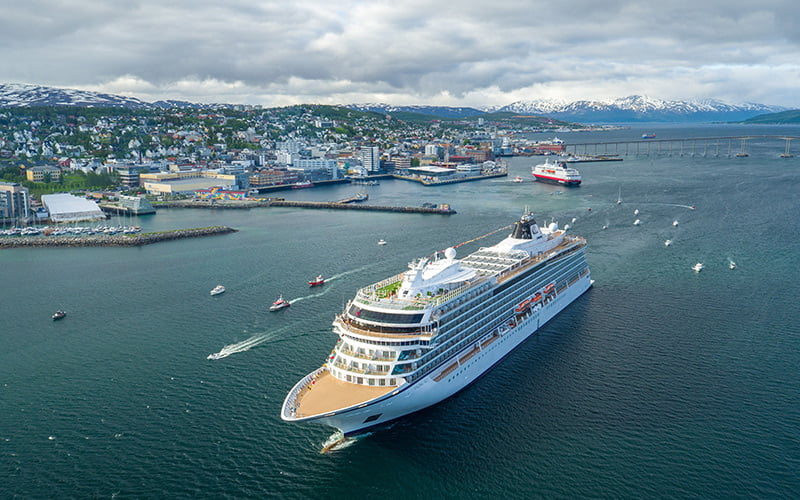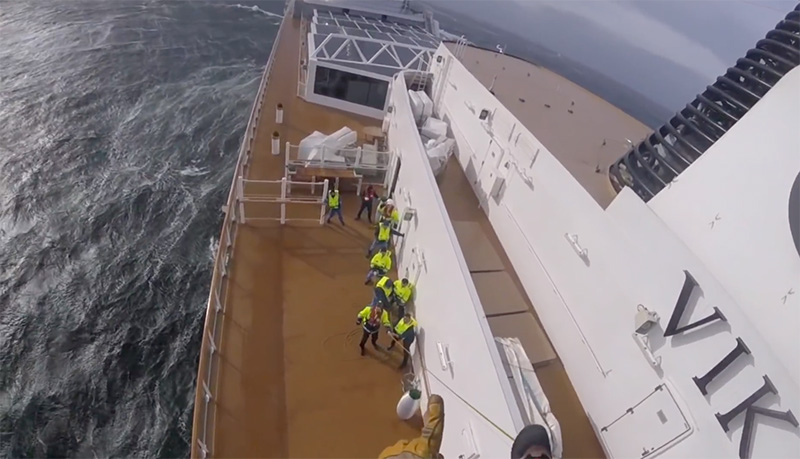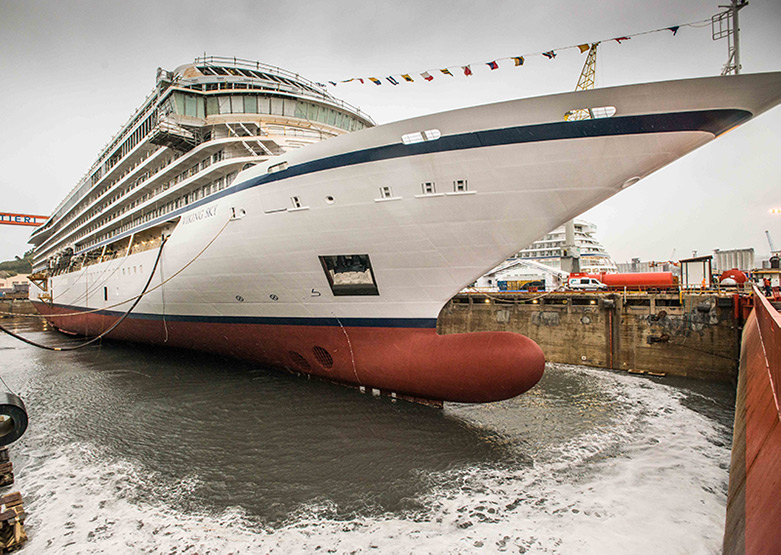
The Viking Sky made it to shore after a remarkable rescue operation that captivated the world. Now, it's time to ask questions.
Following the daring rescue of nearly 500 passengers from the stranded Viking Sky and the successful docking of the vessel in Molde, Norwegian authorities have launched a formal investigation.
The incident is to be examined by the Norwegian Maritime Directorate, the Norwegian Police and the Accident Investigation Board. The ship owner, Viking Ocean Cruises, have pledged their full support.
Watch: Astonishing videos from the Viking sky rescue
The question is simple: How can a ship barely two years old lose power to all its engines? Plus, should the ship have sailed into the storm in the first place?
Decision-making questioned
Early opinions on the case in the Norwegian media have varied. Several experienced people have been openly critical of the decision to sail in the first place.

A former rescue ship captain with long experience of Hustadvika told Dagens Næringsliv carries comments from a former rescue ship captain who is highly critical of the decision: “I can’t understand why they did it. There was no need to go out, not least thinking of the passengers”.
However, the Norwegian Coastal Administration back the captain’s decision to sail. They say the decision was in line with the advice received from the two officers on board in charge of navigation. The Communications Director Solveig Moe Frøland told Bergens Tidende that there was nothing to suggest that the Viking Sky shouldn’t take that route in the weather conditions.
Pilot defends decision to sail
Inge Lockert, one of the two pilots that advised the captain to proceed, has refused most interviews. However he did give a brief interview to his local newspaper Vesterålen Online.
Some have said that the ship should not have sailed. But this is a vessel that is over two hundred meters long and ten metres wider than the Hurtigruten. We went through the voyage plan with the crew in advance and everything went as it should – until we lost the engines That's when the problems began”, said Lockert.

Lockert also talked of the high adrenaline level's on the ship's bridge when it was clear the ship was just 100 metres from a complete disaster. “Obviously, it was a tremendous relief to get the engine power and recover from it”, he said.
Stranded in a storm
The Viking Sky lost power in its engines as it sailed south from Tromsø to Norway. The ship declared an emergency as it was caught in stormy waters at Hustadvika.
Without power, the ship rocked violently in huge waves and began to drift dangerously close to land. Hustadvika is known for its rough conditions and has claimed several vessels over the years.
I personally experienced bad weather at this exact spot on my Hurtigruten trip back in January. It was quite the nervy experience, so I can just about begin to imagine what it must have been like for the almost 1,000 passengers on board, many of whom will never have set foot on a cruise ship.
The next scheduled sailing, Scandinavia & the Kiel Canal, which was scheduled to embark on March 27th has been cancelled. Remarkably, Viking Ocean Cruises says the vessel should be in a position to sail again by mid-April.


This is the most incredible story. I support the captains decision to sail. Even if there were low oil warnings there was no reason for the computer to shut down the engines 100 meters from the coast. The engines were fine and could have saved the ship if the anchor slipped. Although there is the possibility that the crew was incompetent I believe that the computers prevented an expeditious restart of the engines at a potential loss of 1000+ lives . The ironic thing is that the captain saved the ship by throwing out the anchor which is what sailors have done to save there ships over the last 4000 years in storms. The men who should be held accountable in this investigation are the software programmers for the engine logic. Kem. Kough
As a retired Air Force pilot (26 years) and software test engineer (10 years), I wholly agree that the main fault lies with the engine control software. I happened to be a passenger on the Viking Sky’s harrowing voyage, and have a personal interest in the results of the investigation. While the programmers might have been very good at coding software, it’s obvious that the software wasn’t adequately tested by personnel with relevant nautical experience, who could have asked the “what if”questions to prevent this type of situation. Mission critical software should never be given the authority to shut down the engines without requiring active concurrence by humans. In combat aircraft, engines can’t be shut down, weapons can’t be fired/released, and critical systems can’t be shut down without the aircrew’s concurrence. Is this a limiting factor? Possibly, but we haven’t had any autonomous aircraft engine shut downs yet.